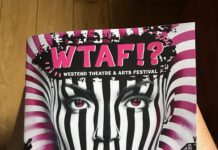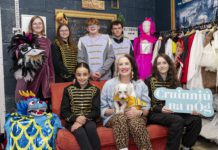Two Irish artists joined a six day research aboard the RV Celtic Explorer to find inspiration as part of the Galway 2020 Aerial/Sparks project.
Artists Gareth Kennedy and Sarah Browne, who work together as Kennedy Browne, joined a research expedition from the Marine Institute investigating cold-water coral habitats in the Porcupine Bank Canyon.
For two years now, artists, writers and composers from around Europe have been heading to sea with the Marine Institute as part of Aerial/Sparks.
Created by artist Louise Manifold for Galway’s European Capital of Culture programme, Aerial/Sparks will result in the creation of standalone artworks for radio broadcast in autumn 2020.
For Kennedy Browne, the chance to go to sea on a research vessel was a dream invitation and a unique artistic opportunity.
As part of this project they got to work with further with methods of audio recording and with the medium of radio as a form of transmission.
Collaborative reading and scripting is a big part of Kennedy Browne’s method of working together and they share an enthusiasm for working collaboratively across disciplines.
During this expedition, as they got a glimpse of the breathtaking coral habitats, they were struck by just how many different fields of research were drawn to these places.
“It was impressive to see knowledge being collaboratively shared and worked through in this way,” the two artists commented.
“Seeing and thinking about coral as a material in this way led us to some research into its mythology, and its representation in paintings from the fifteenth to nineteenth centuries.”
“It’s a richly evocative material and we hope to incorporate it into our project,” they added.
The research team from UCC were using the remote operated sub to recover landers deployed to the sea bed during a survey earlier that summer.

These monitoring systems were recording the speed, temperatures and direction of the currents around cold-water coral habitats at several sites along the Porcupine Bank Canyon, a submarine canyon over 300km from the west coast of Ireland.
They also trap samples of the food, sediments and microplastics being deposited around the corals to understand conditions and how the corals are coping with changing oceans.
The artists watched the video feed of the ROV searching the ocean floor for landers, saying “It’s difficult to convey the tension and awe of watching the feed.
“We witnessed incredible beauty and banal violence on the sea floor at the Porcupine Bank, an albino rabbitfish, and moments later, a discount shopping bag caught under a rock.”
“Overall we found these contrasts of the sublime and the common place were a pretty striking marker of our experience.”
The discovery of plastic rubbish at the bottom of the canyon (2,125m) underscores the reach of human plastic waste and the samples will be analysed by the scientists to see if microplastics are being fed to the corals from above.
The artists took photographs, video and audio recordings inside and outside the ship, talked to the scientists and crew about their work, and visited the dry lab and wet lab frequently.

The next step for Kennedy Browne will be a collaborative writing week in the winter.
They are planning a new sculpture and audio broadcast for development and production next year, which will be presented as part of the Aerial/Sparks project in 2020.











